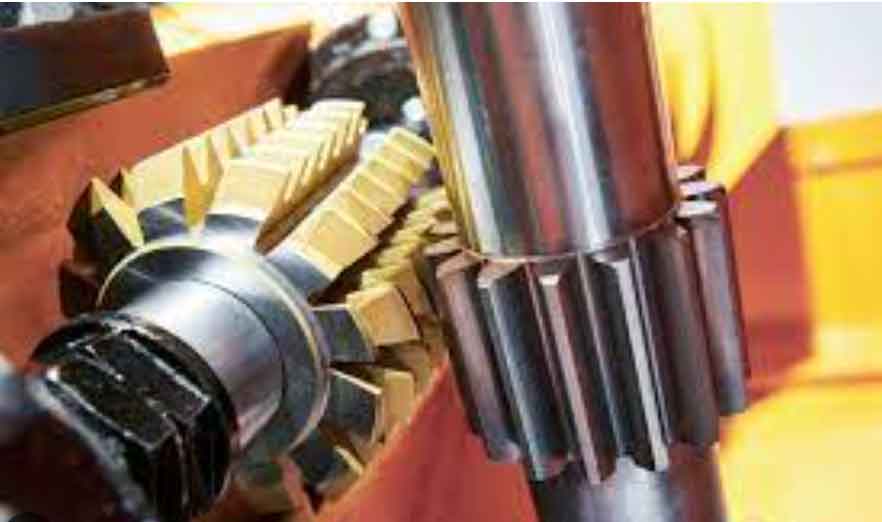
Gear Hobbing Process Basics:
Gear hobbing is a subtractive manufacturing process used to produce gears with high precision and accuracy. The process involves using a specialized cutting tool called a hob to create the gear teeth. The hob has helical cutting edges that match the desired tooth profile of the gear. During the hobbing process, the hob is rotated and fed into the gear blank (workpiece) to generate the gear teeth.
The gear hobbing process can produce various types of gears, including spur gears, helical gears, worm gears, and more. It is widely used in the gear manufacturing industry due to its efficiency, versatility, and ability to produce gears with excellent surface finish and dimensional consistency.
Gear Hobbing Process Steps:
- Gear Blank Preparation: The process starts with a gear blank, which is a cylindrical workpiece made from the chosen gear material. The gear blank is mounted on the hobbing machine’s work spindle.
- Hob Installation: The hob is selected based on the gear specifications, such as tooth profile, helix angle, and number of teeth. The hob is mounted on the hobbing machine’s hob arbor.
- Hobbing Machine Setup: The hobbing machine is set up with the appropriate feed and speed rates for the specific gear being manufactured. The machine settings depend on the gear module, number of teeth, and other gear parameters.
- Hobbing Operation: The hobbing process begins by rotating the hob and the work spindle simultaneously. The hob is then fed radially into the gear blank to cut the gear teeth. The relative motion between the rotating hob and the gear blank creates the gear teeth through a process of continuous cutting.
- Multiple Passes: In most cases, gear hobbing is performed in multiple passes. Each pass removes a portion of material to form the gear teeth gradually. The gear blank is indexed after each pass until all teeth are cut to the desired depth and profile.
- Finishing Operations: After the hobbing process is complete, the gears may undergo additional finishing operations, such as grinding, shaving, or honing, to achieve even higher precision and surface quality.
Applications of Gear Hobbing:
Gear hobbing is a widely used manufacturing process in various industries, including:
- Automotive Industry: Gear hobbing is extensively used in the production of automotive transmission gears, differential gears, and other drivetrain components.
- Aerospace Industry: Gear hobbing is employed in the manufacturing of gears used in aircraft engines, landing gear systems, and other aerospace applications.
- Industrial Machinery: Gear hobbing is used to produce gears for various industrial machinery, such as machine tools, printing presses, and textile machinery.
- Robotics and Automation: Gear hobbing is essential in the production of precision gears for robotics and automation systems.
- Mining and Heavy Equipment: Gear hobbing is used to manufacture gears for mining equipment, construction machinery, and other heavy-duty applications.
Overall, gear hobbing is a versatile and efficient process that plays a critical role in producing high-quality gears for diverse applications in multiple industries. Its ability to produce gears with accurate tooth profiles, high load-carrying capacity, and excellent surface finish makes it a preferred method for gear manufacturing.
